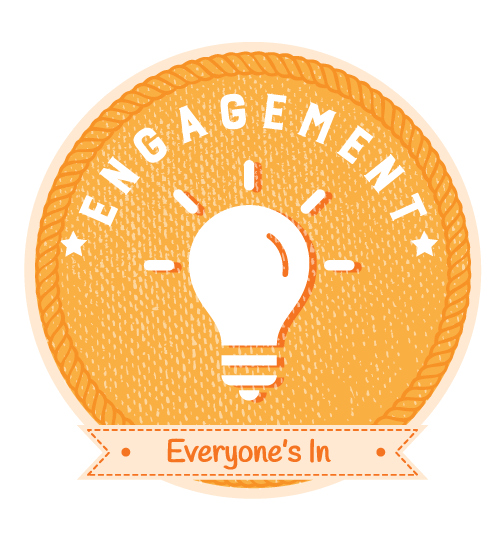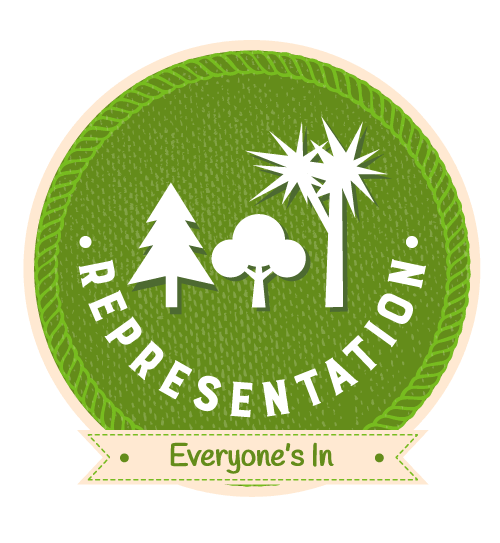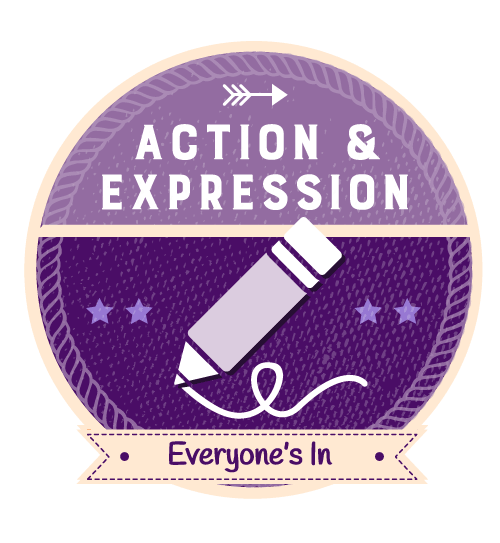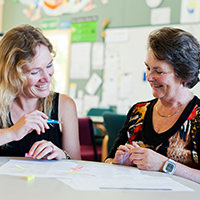The theory behind the practice
This tool is underpinned by some of the key ideas of Universal Design for Learning (UDL), a research-based framework that helps teachers plan learning to meet the diverse and variable needs of all their students.
UDL recognises that for education to be truly inclusive it needs to remove barriers to learning. A teacher that uses UDL, plans learning environments that are flexible and responsive to student needs, interests and strengths.
Inclusion using a UDL approach

In this image, it is assumed that everyone will benefit from the same supports. They are being treated equally.

In this image, individuals are given different supports to make it possible for them to have equal access to the game. They are being treated equitably. This approach reflects adaptation and differentiation.

In this image, all three can see the game without supports or accommodations because the cause of the inequity was addressed from the outset. The systematic barrier has been removed. This approach reflects UDL.
UDL plans for diversity and expects variability as a constant. It recognises that there is no “one size fits all”. For students to be successful we need to move towards flexible environments, rich in supports and options.
The three principles of
UDL
Principle 1
Engagement
Provide multiple means of engagement.
The ‘why’ of learning, because different students are engaged by different types of tasks and learning situations.

Principle 2
Representation
Provide multiple means of representation.
The ‘what’ of learning, because students differ in how they perceive and understand information.

Principle 3
Action and expression
Provide multiple means of action and expression.
The ‘how’ of learning, so that all students can participate and show what they have learned.

Watch: Summary of UDL
Watch this four-minute summary of UDL and the NZC.
Watch this three-minute summary of the UDL philosophy, using bowling as a metaphor.
When to adapt or
differentiate for students
This tool uses some of the key ideas from UDL to create an inclusive classroom curriculum. UDL ensures there are multiple options for all students to engage, comprehend, and express themselves. An option traditionally offered to one student can easily be made available as an option for everyone.
Sarah is visually impaired and requires large format text. The teacher offers electronic text to all students. This decreases stigma and increases inclusion for Sarah. She can make her version of the text bigger to suit her needs, while other students use the digital text to highlight and check unfamiliar words in an online dictionary.
There may be students in your class whose needs are not fully meet by a UDL approach. After planning using a UDL approach, you will then use this tool to look at whether there are any specific adaptations or differentiations required for these students.
Peter has a severe visual impairment and requires non-visual access to his computer. He is working at level 1 of the curriculum, while the rest of the class is working at levels 3–4. As an adaptation, Peter uses a screen reader that is not offered to the rest of the class. The teacher refers to his IEP and works with the school’s learning support coordinator to differentiate the content where necessary.
Knowing your learner
When teachers have an authentic interest in who their students are and who they aspire to be, teaching and learning relationships are improved.
The classroom curriculum should reflect who the learners are. Students benefit from experiences and challenges that relate to their interests, strengths, and goals.
Click here for a downloadable selection of questions that you can use with your students to get to know their learning needs and goals.
There are a number of actions you can take to make sure that all your students can access and enjoy your class environment equally.
| Is the furniture arranged so that all students can move around easily? | |
| Are the student resources placed where they can access them independently? | |
| Do I use labels, colour codes, and photos on the resources to allow easy access? This will also support students to own and manage their own learning, by allowing them to clear up after themselves. |
If you answered no to any of the above, there are actions you could take to make your classroom more inclusive.
| Do I cluster desks to support students on collaborative tasks? | |
| Do I arrange the desks in a horseshoe for whole group presentation time? This allows everyone to see each other and improves acoustics by minimising the distance between students and the person presenting. | |
| Do I have bean bags or floor cushions available to support quiet reading or individual work? | |
| Are there ways I can physically divide my classroom to signify class space and quiet individual space? | |
| Have I incorporated special desks and wheelchairs into the regular seating layout? This allows students using this equipment to work more freely with others. | |
| Am I aware of students who like to know where they will sit? In what ways can I support this need? Even with changing desk patterns, you can create systems to support such students - let them know that the desk closest to this window is always theirs, or that they have a specific chair that is their own.) |
If you answered no to any of the above, there are actions you could take to make your classroom more inclusive.
| Does my room have a comfortable temperature? | |
| Do the windows open and close to help control the temperature? | |
| Am I aware of students who are less or more physically active than most and who often feel colder or hotter? |
If you answered no to any of the above, there are actions you could take to make your classroom more inclusive.
| Is there good natural lighting, without glare? | |
| Am I aware of any students who require certain light conditions or who are distracted by or sensitive to light? | |
| Can I create different lighting conditions in different areas of the class? |
If you answered no to any of the above, there are actions you could take to make your classroom more inclusive.
| Can I create, or do I already have, a visually connected but quieter space in the room? | |
| Am I aware of students who are distracted by or sensitive to sounds in the environment? | |
| Do I vary the acoustic conditions for my students? (By using headphones, sitting near to the teacher or their peers, using a quiet space). |
If you answered no to any of the above, there are actions you could take to make your classroom more inclusive.
